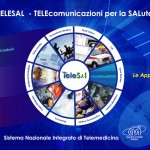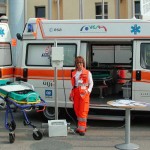
Develop and implement an integrated approach is the main goal of the project MIA-VITA. “MIA-VITA” stands for “Assessing and Mitigating Volcanic Impacts on Terrain and human Activities” (Check and mitigate the risk of Volcanic Impact on Land and the Human activities). The volcanic phenomenon is a threat on many levels for the environment and human communities. The responsibility for testing and managing the many dangers and risks from volcanoes lies with the Authority of Civil Protection. This requires the combination and coordination of different skills, instrumental techniques and experience in volcanology, geology, physics, signal processing, data analysis, agriculture and social sciences. The audit and risk management is a critical element in many countries, especially those denominated ICPCs (International Cooperation Partner Countries).
The effective administration requires a method of integrated management and continuous volcanic risk by scientists and local authorities. This approach has three main objectives:
- prevention: the verification of the risk is based on risk maps and the multiplication of crises;
- improving the ability of emergency management-based monitoring systems, alarm and secure communications;
- reduction of human vulnerability and capacity of recovery after the event for local communities and ecosystems. These objectives require the design of an integrated information system that includes the organization and transmission of data.
Cliente: Commissione Europea, 7° Programma Quadro di Ricerca e Sviluppo Tecnologico, Tema “Ambiente”, Attività 6.1 “Cambiamento Climatico, Inquinamento e Rischi”
Ruolo Kell: Partner
Partner: BRGM – Bureau de Recherche Géologique et Minière, France (Prime Contractor); INGV – Istituto Nazionale di Geofisica e Vulcanologica, Italy; IST – Instituto Superior Tecnico, Portugal; CNRS, Laboratoire de Géographie Physique, France; NILU – Norwegian Institute for Air Research, Norway; Inesc-ID – Instituto de Engenharia de Sistemas e Computadores Investigação e Desenvolvimento em Lisboa, Portugal; Hohenheim Universität, Germany; University of Cambridge, UK; Dipartimento della Protezione Civile – Presidenza del Consiglio dei Ministri, Ialy; INMG -National Meteorological and Geophysical Institute, Cape Verde; MINIMIDT – Ministry of Industry, Mines and Technological Development, Camerun; DDSC – Direction de la Défense et de la Sécurité Civile; CVGHM – Center for Volcanology and Geological Hazard Mitigation; PHIVOLCS – Philippine Institute of Volcanology and Seismology.


